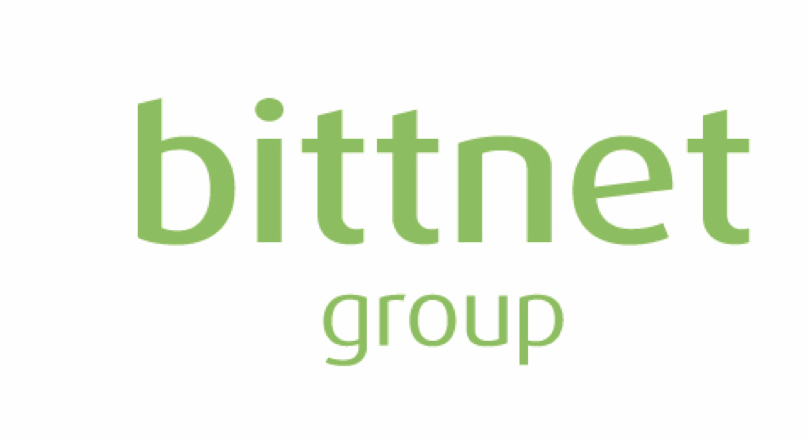 In the first 6 months of the current year, our Group recorded consolidated revenues amounting to RON 146 million, an increase of over 110% compared to the same period of the previous year. Gross margin increased by 32% to RON 23.5 million (compared to RON 17.9 million last year). Indirect expenses amount to RON 27.6 million (86% higher than in H1 2022), resulting in an operating loss of RON 954 thousand (compared to a profit of RON 3.6 million in H1 2022).
In the first 6 months of the current year, our Group recorded consolidated revenues amounting to RON 146 million, an increase of over 110% compared to the same period of the previous year. Gross margin increased by 32% to RON 23.5 million (compared to RON 17.9 million last year). Indirect expenses amount to RON 27.6 million (86% higher than in H1 2022), resulting in an operating loss of RON 954 thousand (compared to a profit of RON 3.6 million in H1 2022).
The financial result is a loss of RON 4.5 million (of which 3.5 million actual cash expenses), leading to a gross loss of RON 5.4 million, compared to a loss of RON 1.4 million in H1 2022.
The annualised outlook confirms the impact of the fixed cost increases in H2 2022, which was not yet completely absorbed (rent for the new premises plus team salaries due to inflationary pressure): total revenues amount to RON 268 million, up 105% compared to the previous period, gross margin exceeds RON 48 million, up 53% compared to the previous period, and indirect expenses amount to RON 50.7 million (up from 26.2 million), so that the operating profit amounts to RON 3.8 million, roughly 40% compared to the previous period.
The current group dimension, reached with the acquisitions of the past 12 months, allows us the opportunity to start aligning the operational profitability to the industry averages. What we mean is thee operational profit expressed as a percentage of revenues.
Operational Profit is a relevant indicator for companies that do deploy borrowed capital in order to make acquisitions. On average, international companies operating in the same industry like us (IT Services) record a 8% OP margin. In the past year Bittnet has recorded a ±4% rate, that was in line with the Romanian industry average (source being a ZF.ro integrator’s top 10 for 2020).
Our goal now is to increase this indicator to the 8-10% interval, based on 5 main action items:
- Increasing the services in the revenue mix
- Extending the customer base internationally
- Keeping admin costs under control as a % of revenue
- Cros-selling between business lines
- Increasing the gross margin generated in the same time unit
This time, the aggregate picture is one that rather serves to illustrate the resilience that the group structure and overall size offer us – all lines of business are unlikely to have good or bad years at the same time – which allows us to deal with problems that arise in each business quietly, and focus on solving them in a healthy way, setting the stage for continued long-term growth. We have not yet reached the “anti-fragility” threshold, still “resilience” is obvious in this context.
Instead, the negative effect is the “average effect” – performers’ achievements are “flattened”. This is an additional reason why we want to have each business pillar listed independently. Returning to the analysis of the reporting period, in order to understand the results of this half-year, we need to examine individually the items that make up the results:
- The revenues from IT&C solutions are 2.4x higher than in the previous year. As we have already shown, this type of revenue is the one that can increase the fastest, and allows us to have a complex contact with customers, an understanding of their infrastructure, and their confidence that we can also deliver quality services. The probability of delivering only services for IT infrastructures delivered by our competitors is small. Even though this business naturally has a lower gross margin percentage, it is more relevant to look at the actual gross margin generated, counted in dollars, because we do not pay salaries in percentages.
- In the past years, we complained about the extension of the delivery terms as a result of the fracturing of global supply chains, saying that at some point in the future, all efforts to build IT&C infrastructure projects are going to “catch up with us”. This first semester of 2023 more correctly illustrates the new business dimension, with the specific deadlines for bidding, winning and then delivering IT&C solutions.
- The nearly 36 million in services delivered in H1 2023 represents a 21% real increase over H1 2022[i], made up of a 41% increase in services within the technology division, and a 30% decrease in training revenue – explained almost 100% by Microsoft’s global cancellation of the ESI project in their effort to reduce costs for these 6 months.
The services delivered by the group in H1 2023 represent a value almost equal to the entire annual turnover for 2017 – the year of the first M&A acquisition.For the end of the year we estimate a total value of services delivered by the group amounting to over RON 80 million – similar to the entire turnover for 2019. These developments illustrate the continuous transformation of the group.
Shifting our attention from P&L to the financial position, it is the most solid in history: equity reached a historical value of RON 90 million, the cash position reached a historical peak of RON 52 million, the ratio of financial debts is 58/42 long term/short term. This solid financial situation brings us very good relations with our partners, especially IT solution providers who grant us significant supplier financing. As a proof, the value of inventory plus receivables from customers almost perfectly balances debts to suppliers, while cashflow from operations exceeds the value of the entire year 2022 – i.e. RON 20 million.
Staying with the cashflow analysis, we not the H1 2023 brought us the largest equity raising round in our history – almost RON 30 million. Combined with the operational cashflow of RON 20.5 million, and a new bonds issue of RON 4.9 million, we were able to pay back a maturing bond of RON 10 million, pay back bank loans of RON 9.5 million, and make M&A payments of RON 22.7 million, WITHOUT DECREASING our cash position. On the contrary, this is the largest in history – RON 52 million.
In April 2023, at our annual Investor Day, we announced that we will start focusing as of this year on operational profitability, ahead of reaching our revenue target of RON 500 million. This process is a medium-term one and its effects are not seen instantly, given the long sales cycles specific to our industry (6-9 months), combined with the long lead times (3-6 months) and the actual time required to implement various changes once they are identified and agreed. On the other hand, we can see the first effects only 3 months after the start of this process:
- Sales/distribution expenses increased by RON 2.4 million in absolute amount in H1 2023, but in relation to sales we are talking about a 33% decrease in the percentage represented by these expenses – or, in other words, a 50% increase in sales efficiency: if in H1 2022 each RON spent on sales processes brought us back RON 11.7, in H1 2023 each RON spent on sales brought us back RON 17.5 of revenue.
- The same evolution has been seen in administrative expenses, which apparently doubled their value – an increase of RON 10 million. However, 65% of this increase is explained by the expansion of the consolidation perimeter (TopTech, 2Net and Dataware are not included in the H1 2022 comparison base), and by the fact that in H1 2022 we did not pay rent for the ONE headquarters – 16% effect. Conversely, even with these increases, administrative expenses decreased by 4.6% as a share of sales. Eliminating the rent effect, the decrease in administrative expenses is RON 2.2 million (10%) compared to the H1 budget, a reduction achieved in just 3 months.
Based on our historical data, as well as that of many other listed issuers in the IT sector, most of the revenue, and therefore almost all of the profit, is made in the last quarter of the year, the first half always being the weak one. In this context, the operating result for the first six months, far from ideal, is not actually “something to be afraid of” in terms of the profit growth target compared to the previous year.
Furthermore, in H1 2023 we added 400 new customers to the group (85% from the extension of the group, and 15% via organic growth). These numbers carry an important weight given the new focus on cross-selling and upselling.
In H1 2023 we have adjusted the direction of our company, in order to achieve an operational profitability in line with our industry. It is obvious that this alignment takes time, the results cannot be seen after 1 trimester. We are convinced that we have a valuable management team that runs our businesses, people who will be able to identify, test, and implement all necessary solutions in each of the steps of this journey.
As usual, we encourage you to send us feedback about this report, the company’s evolution or future plans. Investors’ feedback is always welcome. You can always contact us at investors@bittnet.ro
Mihai Logofătu, CEO
